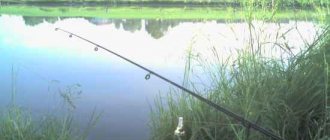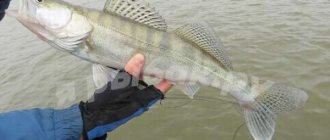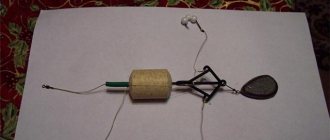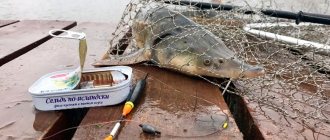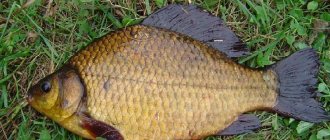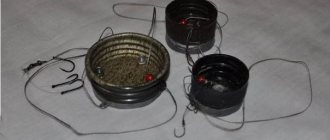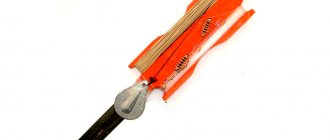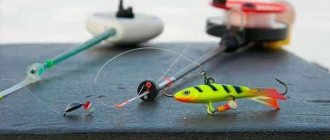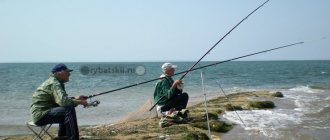Donka fishing is effective both in bodies of water with currents and in lakes and spots with still water. On such fishing, it is possible to use several rods and thus increase the size of the catch.
Having chosen a convenient place on the shore and identified promising points, the fisherman casts from 5 to 10 donks, or even more, and expects a bite. At first glance, it seems that when fishing with five rods you have a better chance of catching a fish, but you need to know how to fish with a donk correctly so that every fishing ends successfully.
The designs of bottom gear have fundamental differences, but they perform the same functions, luring and catching fish feeding in the bottom layer of the reservoir. Whether we are talking about a river with a strong current, or a forest lake, for each specific situation there is a bottom equipment that performs its functions better than others.
And no matter what type of donkey we are talking about, it can be used to solve the following problems:
- deliver the tackle to the fishing point;
- attract fish and provoke them to bite;
- detect and bring her safely to shore.
But these are still general problems and in each case their solution depends on:
- bottom fishing rod designs;
- the presence of a feeder or spring;
- cargo weight;
- lengths of fishing line and leashes;
- baits and baits.
Choosing a suitable body of water
When choosing a pond for fishing, you need to make sure that it does not have thick thickets of grass, as well as snags at the bottom, which will become a serious obstacle and cause regular breakage of equipment.
Even if there is marshy silt at the bottom of the reservoir, this problem can be solved, because it is enough to lengthen the leash, lighten the nozzle so that it is accessible to the fish and no special problems will arise.
Donka fishing is also effective in reservoirs with a rocky bottom, where snags on solid obstacles are also possible. This problem is solved by reducing the number of hooks on the equipment, which already reduces the likelihood of snagging.
When catching fish, the fisherman forces the fishing, preventing snags, and when reeling in the equipment, he lifts the tip of the rod up and the rig with hooks floats up faster, passing over obstacles. There is nothing complicated here, and after the first few fishing trips you acquire the necessary skills, so there are practically no snags.
In order to determine the type of bottom in the reservoir where fishing will take place, marker gear or an echo sounder are used. It is easier for boat owners, they can check the bottom with long probes and make sure that fishing will be comfortable.
Rivers with a current are a win-win option for donkeys; the main thing is to find where the riverbed is located, where silt does not accumulate and there are practically no large stones.
Experienced fishermen claim that proper preparation for donk fishing and thorough exploration of the reservoir significantly increase the chances of catching a lot of good fish. So pay the right attention to this aspect and many problems will be avoided during the session.
Casting technique
A classic bottom with a spring is fished using a rod equipped with a spinning reel, which simplifies the process of casting equipment and increases its range. A regular throw is thrown from the hand and the range suffers as a result.
If you cast a tackle with the same characteristics using a telescopic or, especially, a carp rod, you will be able to do this much further.
Most often, large trophies prefer to stay away from the shore, so the distance to which the tackle is sent also affects the size of the catch. The difference in casting by hand and with a rod is several tens of meters, so the advantages of using it are obvious.
The spinning reel also plays an important role, because it was invented specifically for long-distance and accurate casting. Having equipped the bottom with bait and placing a nozzle on the hook, the angler reels in the fishing line so that 30–40 centimeters remain from the installation to the tulip.
Next, he presses the fishing line with his finger to the rod blank, opens the reel bail, and, tilting the blank back, strongly sends the equipment into the water in the given direction. In this case, you need to remove your finger from the fishing line in time, otherwise you won’t be able to cast the tackle, and the reel’s exit from the spool will slow down ahead of time.
Casting strongly and accurately towards the fishing spot is the first thing any beginner should learn. It is also very important that each time the equipment flies to the selected distance, to a pre-fed place. To make this task easier, fishing is done “under the clip” and every cast turns out to be quite accurate.
How to catch "under the clip"
Each spinning reel has one, two, and sometimes three clips on sports reels. These are a kind of clamps for fixing the fishing line in the right place. Having chosen a fishing spot and fed the fish, the angler measures the distance and marks it on the main line.
This is easy to do by simply stretching the fishing line along the shore and hooking it into a clip in the right place. Casting is done as usual, with the reel bail removed and the line pressed with a finger to the blank. After casting, the rig reaches the specified distance, the line is locked with a clip and the hook with the nozzle falls exactly where it is needed.
This is the most accurate way to cast a rig, but it has one drawback. The fact is that when biting a large trophy, the fisherman releases the clutch of the reel and does not force the fishing in order to tire the fish and calmly lead it into the landing net. Naturally, if the line is clamped with a clip, it is impossible to work with the friction clutch due to the limitation of the line coming off the spool.
A paradoxical situation arises, because thanks to targeted feeding when fishing “with a clip”, it is possible to attract trophy specimens, but if a solid trophy still bites, landing it causes a lot of problems and losses are quite possible.
There are two solutions:
- Having measured the required length of fishing line on the shore and hooked it with a clip, the angler moves 10–15 steps/meters from the shoreline and casts the tackle. After splashing down the equipment in the right place, the fishing line is reeled in and the rod is installed on a stand located right next to the water.
- This way, you get a supply of free line on the spool (just these 10–15 steps/meters long), which should be enough for comfortable operation of the clutch when catching a trophy.
The fishing line is fixed with a clip at the required distance and a mark is made on it with a felt-tip pen, but after casting it is removed and after biting the trophy nothing interferes with fishing. After reeling out the fishing line or landing a fish, the required distance is measured on the shore and the fishing line is again attached to the clip.
The second option is more labor-intensive and requires constant measurements, but fish runs are practically eliminated. The first option is preferable from the point of view of saving time and effort, but there is still a possibility that the trophy that has bitten will actively resist and a reserve of 10–15 meters will not be enough to prevent it from getting off the hook.
Experienced fishermen use an alternative method, making a mark on the line with a felt-tip pen or a special marker and, after casting, wind the line on the spool to this mark.
Donocher athletes also use a marker thread, which is tied to a fishing line instead of a tag, but this option is much more complicated and requires certain skills.
Advice! When casting into the clip, the fisherman selects a landmark on the opposite bank so that the equipment hits the baited spot.
Fishing with a classic donkey will be especially effective if, after casting, the tackle “lies” at the same point every time. But whether to use the “clip” fishing method, a marker thread, or marks with a felt-tip pen is up to the fisherman to choose, depending on his skills and preferences.
Night fishing for donkeys
Date: August 7, 2013 | 545
I recently went on an entertaining night fishing trip. I have identified quite a few practical points for myself that will clearly come in handy on future fishing trips of this kind. Theory is one thing. But the most valuable knowledge is gained in practice.
Any fishing begins with planning and preparing equipment, gear, and baits. This applies most of all to fishing with donkeys at night, and to catfish fishing
So, to start getting ready for night fishing with donks, we need to understand what kind of fish we will catch.
Catfish are, of course, the number one prey item. , ide and bream are successfully caught on donkeys . There are also other types of fish, but other whitefish, pike, perch, pike perch, etc., should be considered bycatch.
The place for fishing with donkeys at night , of course, can be very different, depending on the type of reservoir and local conditions, but in most situations, you should choose shallows next to the hole. It is especially successful when you can stand on the shore and throw 1-2 donks into the hole itself; 1-2 at the exit from it, the edge; the rest are on the adjacent sandbank. It is more convenient to be located on a shallow, low bank than on a cliff. But, if there is no choice, and you have to fish from a cliff, it should be possible to go down to the water to take the landed fish...
Nozzles for night fishing on donkeys . Large earthworm, earthworm, crawler - this is bait No. 1. It is used to successfully catch catfish, ide, and large bream at night. Locusts and large grasshoppers are also good bait options. To catch catfish, it is advisable to put several smiths on the hook at once.
It is still possible to use the following baits for catfish: frog; large baitfish; fish meat; shell meat; cancerous cervix; a dead bird roasted in a fire, successfully found; fish offal; pieces of meat that have begun to spoil.
When fishing for ide or bream at night , in addition to crawls, you can attach a leech; steamed peas.
The tackle is quite powerful donks. These are not feeders, because we do not intend to fish from a well-chosen place where the fish walks at night, emerging from an adjacent depression in the river or lake, hole. Of course, it’s possible that someone is fishing on the feeder at night. But now the story is not about that.
Basically, the calculation of the described night fishing to catch catfish. So the tackle must be quite reliable and even brutal.
Night fishing rod – HARD!!! spinning rod 2.4-3m long. We should freely throw weights in the range of 30-150g. So, there is no universal rod... You will have to have spinning rods with a test weight of about 20-40g, 20-60g (as an exception - 10-30g) in places where the current is not very powerful and it is possible to use sinkers weighing no more than 30-40g. Well, under heavy weights I loaded my own rods with the appropriate test. So, in pits with a rapid current (near the surface...) you need to use weights of 100g or more.
Reel for night fishing with donk . It is optimal to use a powerful spinning reel with a baitrunner. This makes it possible to install a donk, turn on the baitrunner and not be afraid that the fish will drag away the tackle or get away before hooking... There is no need for any stupid devices for tying the tackle to pegs on the shore, etc. Abandoned - turned on the batrunner mode. The rear clutch, set weakly, will allow the line to be released with little effort when the fish bites. When the angler finds himself at the triggered donkey, he takes the rod, turns the reel, turns on the front brake, makes a hook, and begins to fight the fish. Everything is very convenient and reasonable.
We wind a braided cord onto a reel. It is both more sensitive to accurate bites and durable, compared to monofilaments of a similar optical section. Those. if we use a cord with a tensile strength of 10 kg, it will be clearly thinner than a monofilament line with the same breaking force. We usually fish on rivers. The current will blow a steeper arc the thicker the fishing line... So, the cord, being thinner, is just fine. Yes, there is no springing effect like a fishing line. All the fight against the jerking of the fish must be done by using the rod and working with the reel clutch.
We put a sliding sinker and a bead on the cord, and knit a swivel. The sinker can simply have a longitudinal hole, or it can be mounted on an anti-twist tube. The bead will protect the knot from the impacts of the sinker. We knit a leash from a thinner cord to the swivel (leash length from 30cm to 1m, rarely more). We select the hook based on the bait and type of fish. Catfish and crawler - a large hook with a long shank. Bream, ide and peas are quite small hooks. Well, in that spirit.
About the amount of gear... What a pity to look at the guys who fish 10-20 donks... Morons They deliberately spoil their pleasure from fishing. I believe that it is optimal to fish with 2-3 donks - no more. The extreme option 3+1 is possible. We work with 3 main donks, and put the 4th on some very large, purely catfish bait, such as a dead crow, large live bait, a heap of pike innards, etc. There is a high probability that such a “tidbit” will never be touched... So, the 4th tackle will not distract us much. But if it bites there - Oh!
So, 2 donks are just right! There is no confusion, no panic and no running around. Well, 3 pieces... No more!
Donks are placed in special clamps, vertically. You can use flyers with electronic bite alarms. Some people use regular bells...
Another important piece of equipment is, of course, flashlights. We fish at night - we need some kind of lighting. Headlamp + large powerful flashlight. Thus, the forehead protector helps in tracking bottoms, setting hooks, when taking fish, etc. A large, powerful flashlight - for monitoring more distant objects, more accurate casts “into the darkness of the night” For scaring away defects, if anything...
Some night-dwellers make a fire on the shore without fail. Some don’t breed...
Happy night fishing for donkeys ! NHNCH!
Share with your friends:
Category: Tackle Equipment
Tags: Donka, Hooks, Nozzle, Night, Equipment, Tackle, Catfish, Ide
How to properly install a fishing rod
Bottom fishing, regardless of the type of equipment, involves a long wait for a bite and to increase the chances of a catch, several rods are used. There are, of course, situations when the bite is very active and you have to fish with two or even one rod, since there is no time to monitor several “sticks,” but this is rather an exception.
Therefore, after casting, the fishing rod is installed on a stand and an electronic or mechanical signaling device is attached to the fishing line, it all depends on the financial capabilities of the fisherman. But those who know how to fish with a classic donka will confirm that the following depends on the correct installation of the rod:
- how clearly the bite will be visible;
- how quickly the angler will react to it and hook the fish;
- Will the gear be carried away by the current?
In fact, even the number of bites depends on how the rod and alarm are installed, and this is especially true for fishing in the current. At a stake or lake, after casting, you just need to reel in the extra fishing line, which the wind pulls in an arc, and tighten the line so that the bite on the shore and in the depths is clearly visible.
On the river, in addition to the wind, there is also a current, which blows the equipment away from the fishing spot and the hook with the nozzle ends up away from the baited area.
If you simply install a heavy sinker, then the installation will not be demolished, but at the same time you will not see light bites, and large fish will feel significant resistance when biting and will drop the bait.
That is, there must be a reasonable balance of the weight of the load during installation, so that it is as minimal as possible under the existing conditions.
When casting a fishing rod upstream or directly in front of you, you need to be prepared for the line to stretch out in an arc and sink to the bottom for a long time, unnerving with false alarms. Therefore, a place on the shore is chosen so that the equipment is cast slightly diagonally, in the direction of water movement.
In this case, the resistance of the fishing line to the flow will be less and with a light load, the tackle will remain at the desired point after casting. Another way to combat current drift is to choose nearby fishing points. Some fishermen think that the further they cast the tackle, the greater the likelihood of a trophy bite.
But this does not always work, because areas near coastal reed thickets often turn out to be more promising. The fish hides in a shelter and is ready to come out of it, tempted by the smell and taste of the bait that is offered to it in the feeder.
So if there are reed thickets on the shore to the right or left of the fishing spot, it makes sense to cast the tackle almost along the shore and successfully catch large fish.
If fishing with classic bottom tackle is carried out in a clear place where there are no reeds or other promising points, before starting fishing, look for points with holes and undercuts closer to the shore, because there are fish there too.
When casting at 30–40 meters, the line will be carried away by the current much less than at 60–70, this makes it possible to place a smaller load, which means making the equipment more sensitive.
To reduce the force of current pressure on the fishing line, after casting the rods are placed with the whips up, and not parallel to the water, this also helps when fishing on rivers. But on a still body of water, with a strong wind, the tips of the rods are lowered into the water, and the bites are clearly visible and the wind does not interfere with fishing.
There is no need to tighten the line too much after installing the rod on the stands, then bites will be more visible, and in all directions.
Important! When casting with a rod, the overhang of the line is left within 30–40 cm and the force is applied to the entire blank, and not just to the tip. Casting from behind the head is stronger, but you need to learn how to do it correctly so that the line does not get tangled and the tackle does not break.
Bite alarms
Catching crucian carp on a bottom requires the use of additional accessories that help determine the right moment to hook the fish after it comes into contact with the bait. There are three types of modern alarms: bells, bells and electronic devices. The first two are the most inexpensive and common.
How to attach a bell to a donk
Not only the effectiveness of the catch, but also the service life of the fishing line depends on the method. Many anglers hook the alarm directly onto the vein. During the fishing process, the thread slips through the bell mount, overheats and quickly goes out of working order. Experienced fishermen attach the device to a peg driven into the ground so that, indicating the moment of a bite, the alarm flies off the tackle.
The bells are attached to the tip of the rod after throwing the vein with bait into the water. Such devices resemble clothespins and are sold in all fishing stores. Electronic signaling devices are special stands for fishing rods in which the movements of the fishing line are recorded by a roller. The device can be programmed for different sensitivity modes and used to catch fish of any weight. Among bite notification devices, the electronic alarm is the most expensive.
Fishing with a bait without a rod
Zakidushki are the ancestors of modern bottom gear; our grandfathers and great-grandfathers used to fish with them. But even now, many fishermen use similar gear and catch trophy fish in large quantities.
The zakidushka consists of:
- wooden reel with one extended leg;
- fishing lines 70–100 meters long, 0.35-0.5 mm in diameter;
- installation with weight and leashes, tied directly to the main fishing line.
In general, it is recommended to knit rigs for hooks on a separate piece of fishing line 50–100 cm long and 0.30 mm in diameter and tie them to the base while fishing.
In addition to the fact that this design is convenient from the point of view of transportation, if it gets caught on bottom debris, only the hook or the installation itself will come off, and the main fishing line will remain intact, since it is thicker.
In any case, the design of the zakidushka remains unchanged, and installation is done as follows:
- a sinker on a swivel is attached to the end of the fishing line;
- 5 cm above the sinker, 3–5 leashes 3–5 cm long are tied in increments of 8–10 cm;
- At the second end of the fishing line, a loop is knitted to connect to the base.
The design of the tackle is simple and knits very quickly, even on the shore of a reservoir. The weight of the sinker is selected depending on the presence and strength of the current, the size of the hooks depends on the size of the baits used and the expected fish in the catch.
The disadvantage of the classic bait is the absence of a feeder for bait, so you have to feed the fish with balls from a slingshot or manually. There are fishermen who put a spring feeder on a casting hook, but the classic version does not have one.
They cast the cast by hand, but before that you need to unwind the main line from the reel for the entire casting length and fold it in rings on the shore. Next, the angler picks up the end of the fishing line with a sinker and leaves a 30-50 cm overhang. Swinging the load like a pendulum, the tackle is thrown into the water, and the main fishing line is carefully unwound along its entire length.
Important! Before casting, the fishing line should only be folded into rings, then it will not get tangled or break when casting.
Bottom night fishing for casting is complicated by the fact that due to poor visibility, the tackle gets tangled more often when casting, and it is not always possible to throw it in the right place. Unwind as much fishing line as possible from the reel, otherwise when casting, not only the tackle, but also the cast itself will fly into the water.
After casting the rig, the line is reeled in so that there is tension, and the reel is stuck into the sand. The bite alarm is an ordinary bell with an elastic band on which a slot is made for attaching to a fishing line.
To ensure that the fishing line remains taut at all times and bites are clearly visible, a regular stand or branch in the shape of a stag is placed between the reel and the edge of the water, and the fishing line is placed on it.
The bell goes lower, closer to the water, and it is better to tie it additionally to the stand so that after a strong hook it does not fly into the water. When bitten, the bell makes a melodious ringing and you need to have time to hook.
If the alarm goes down, it means the fish has bitten the shore; if it goes up, it means it has gone deeper.
The lack of a fishing rod makes it difficult to catch fish , especially large ones. Firstly, the fishing line cuts your hands, and secondly, it is impossible to quickly release the required amount of fishing line in order to let the fish in and prevent it from breaking away. In spinning reels, the clutch is responsible for this; when fishing by hand, you have to “give” the line, unwinding it from the reel.
When fishing in a current, the bait is also cast diagonally to increase sensitivity and reduce water pressure. If there is no bite, the bait is re-thrown every 30–40 minutes, and the bait is changed to a fresh one.
Design features
Fishing crucian carp from the water using bottom gear is considered a popular and catchy method. Compared to other methods, it has a number of advantages:
- the use of donks at depths makes it possible to obtain large specimens;
- the equipment can be used in windy weather and during currents, which is not always appropriate with a float fishing rod;
- ease of installation.
Luck will only favor the fisherman if he prepares his equipment correctly.
In many ways, the structure of the donkey is reminiscent of a feeder rig, but the angler receives a signal about the moment of a bite not by the rattling of the rod tip, but by means of a bell.
There is nothing complicated in the design of the donkey. To install the tackle you will need a vein, a sinker and several leashes with hooks tied to them. An important point is to attach the undergrowth to the main thread. If you attach it incorrectly, the leashes will become tangled with each other.
Equipping a donkey requires a combination of many factors. The vein must be used as thin as possible, since crucian carp can see perfectly in the water and avoid suspicious objects, including threads of large diameter. When catching this fish, it is advisable to use a braided line with a thickness of 0.06-0.12 mm or a monofilament line with a diameter of 0.12-0.27 mm as the main line. The larger the crucian carp in the pond, the more reliable the equipment should be.
To learn more:
How to choose bait for cold water
To make leashes, thinner material is used, but with good breaking load properties. To prevent the undergrowth from overlapping, the length should not exceed 50 cm. Tackle for the donkey must be shipped correctly. The well-chosen shape and weight of this piece of equipment allows the bait to be in the field of view of the fish, and when fishing it does not provide much resistance. You can choose sinkers of oval, spherical, diamond-shaped, triangular, flat shapes, and their weight depends on the conditions of the reservoir and the strength of the current.
Donk tackle, assembled with your own hands or purchased in a store, must have hooks with the tip bent inward. It is impossible for crucian carp to get rid of such a sting, especially after hooking. The size of the hook depends on the size of the expected prey and the type of bait.
When not to fish with a donk
Separately, it is necessary to say about the prohibitions and how many hooks are allowed to have on a donk, because this information will help fishermen save the environment and at the same time do what they love without fear of being fined. In each region, fish spawn at a certain time, depending on the weather, air and water temperatures.
During the spawning period, fishing with multi-hook gear is prohibited and the classic donk and hook cannot be used. But fishing rods with one hook in most regions are allowed for fishing during spawning, however, there are standards for catching fish by one fisherman per day (most often 3–5 kg of fish).
Therefore, when going fishing, you need to find out what the rules are for fishing in the reservoirs you plan to visit and tie the equipment in accordance with the recommendations of the regulatory authorities.
The classic donka and zakidushka, of course, have advantages due to the use of several hooks, but even with one hook in April or May, during the ban, they catch a lot of excellent fish. So if you don't want to take a break from doing what you love, tie donks with one hook and catch as many fish as allowed by law .
By adhering to the rules of fishing, you will not only not become a violator, but also preserve the ichthyofauna of our reservoirs for posterity, who will certainly be very grateful for this.
